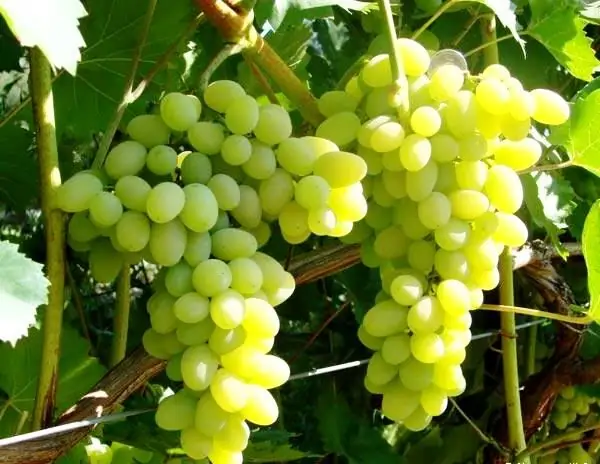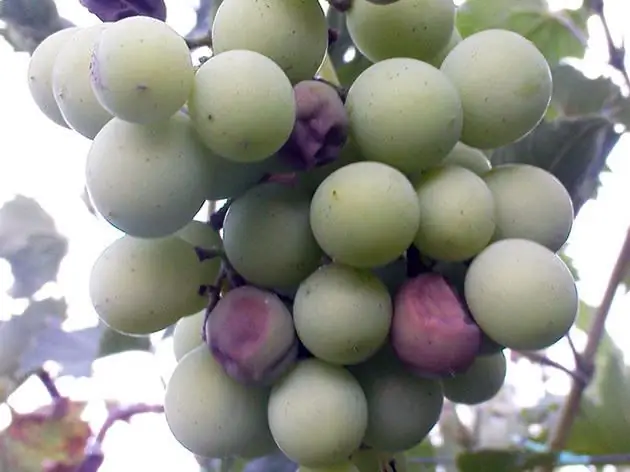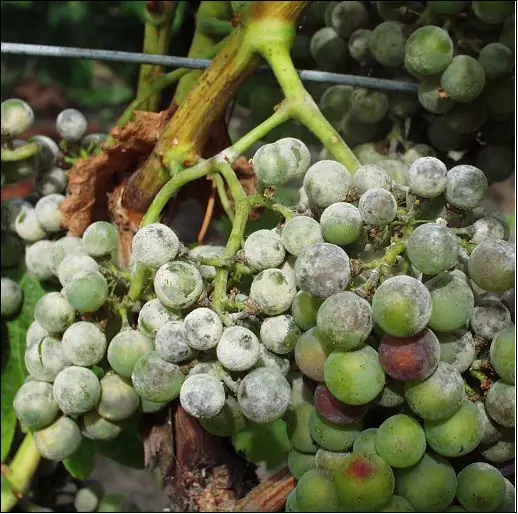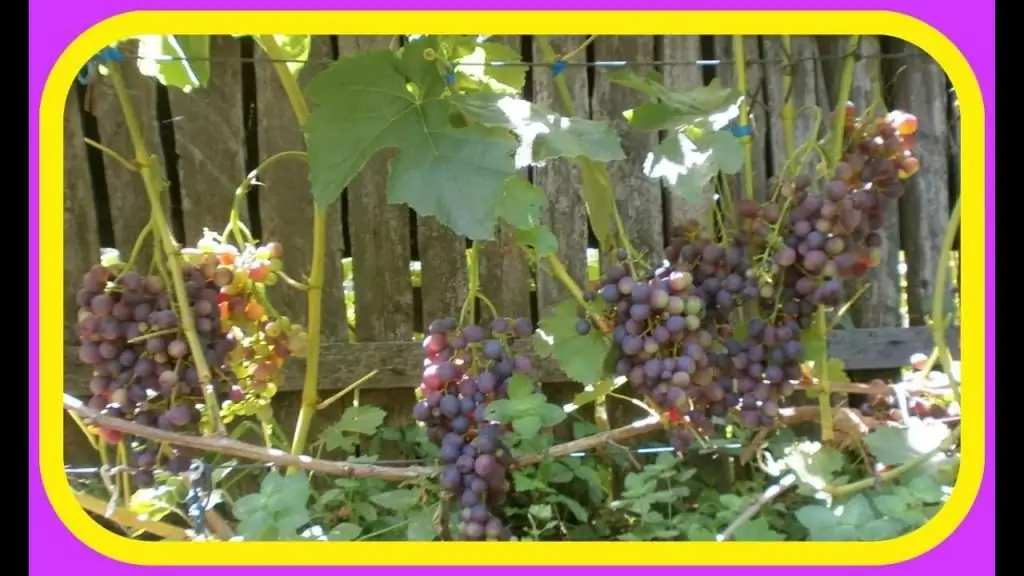We all love to feast on sweet, unusually tasty and fragrant grapes. With pleasure we drink juices made from it, and fine wines do not leave lovers of this drink indifferent. In addition to winegrowers, gardeners also grow crops on their personal plots. In general, the process of growing grapes is not too complicated, but there are some nuances here. For example, berries and even whole brushes often dry up on the vine, which causes alarm among both amateur gardeners and experienced winegrowers. In some cases, it happens that most of the bunches of grapes dry out completely. Today we will try to figure out why this happens and how it can be prevented.

Why do grapes dry?
Vineyard damage by various pests and diseases causes serious damage to the vine. In fact, there are many reasons for the drying of grape brushes. Most often this is due to diseases that are caused by pathogenic fungi. Consider the most famous damage to this culture.
Mildew
The well-known disease of mildew grapes is very often the cause of drying brushes. Mildew brings especially great damage to this plant during flowering, single berries dry up first, and just before ripening grape brushes up to half. This is because the mildew fungus completely blocks the access of nutrients to the bunch. Please note: below in the photo is a bunch of grapes damaged by this fungus.

In order to prevent plant damage, the entire vineyard should be treated with Kurzat, Ridomil, Ordan, Polyhom preparations. Processing must be carried out three times during the growing season - before flowering, after it and when the berries reach the size of peas.
Grey Rot
One of the most common fungal diseases is gray rot. It is found in almost any region where vineyards grow. Infection of plants occurs in the spring, the main reason for this is the fungus Botrytis cinerea. Its appearance is favored by a warm, humid environment. First, the disease affects the leaves and cuttings, a fluffy gray coating appears on them, which crumbles when shaken. It then spreads to the he althy parts of the vine. It brings the greatest harm to the fruits of grapes, which at this time begin to ripen or have already ripened. When infected with a fungus, the berries turn brown and quickly rot. It is strictly forbidden to eat such fruits.
The methods of dealing with this disease are simple: it is necessary to trim the brushesgrapes and other parts of the plant that are affected by the fungus, after which they must be burned. Currently, you can buy seedlings that have strong immunity to this disease.

Dry sleeve grapes
This vine disease is caused by the fungus Eutypa lata and is most common in vineyard regions where the climate is not too mild in winter. In those seasons that are characterized by high rainfall, it causes the most damage.
This pathogenic fungus penetrates the tissues of not only grapes, but also many other fruit and horticultural crops, all this complicates the fight against the manifestations of the disease and its further spread. Eutypa lata infects not only shoots, but also bunches of grapes. Most often, the disease affects already adult grape bushes that are older than 8 years. Dry arm symptoms become most evident already in early summer, when the plant produces a 20-25 cm long growth.
Signs of the disease is that leaves and shoots begin to lag behind in growth, their size and color differ significantly from he althy ones. First, the leaves dry up on the vine, and then the affected shoots and brushes either dry out or stop growing completely and remain so until the end of the season.
Oidium (false sunburn)
This disease is often confused with sunburn. It causes drying of berries and bunches of grapes. What signs appear on the vine with oidium? A slightly noticeable coating of a white-gray hue appears on the grapes, which looks like a tan from the sun, soon the berries burst anddry up. When a vineyard is damaged by oidium, it is immediately treated with colloidal sulfur, this is done before the harvest begins.

Buffalo Leafhopper
This insect is a common cause of grape bunches drying up. It lives and breeds directly under the bush. Gives offspring once per summer season. The larvae, after turning into adults, rise from the grass onto the vine and cause irreparable damage. The cicada damages the shoots and scallops of the plant, after which the vineyard brush disappears. For the prevention and control of this insect, the vine is treated twice with "Benzophosphate", and all the grass under the bush is destroyed. It is recommended to plant onion or garlic in this place, it is believed that they will scare away the pest.

Other reasons
Besides pests and fungal diseases, there are a number of mechanical causes. Most hybrid varieties have very large and heavy clusters. In the event that the brushes are bent, they stop receiving food, they dry out and die. To avoid this, the vine should be placed on supports and arches and try to properly load the vineyard.
The reasons for the drying of the bunches of grapes include the following:
- insufficient watering;
- wrong soil composition;
- lack of warmth;
- low light.
Preventive measures
It is unlikely that grape diseases can be completely avoided, but risks can still beminimize. Try to buy seedlings only in specialized stores. This will prevent diseases for a period of 2-3 years.

Grapes need proper and regular care, which includes loosening the soil and timely watering. A prerequisite for growing grapes is the application of fertilizers, you can successfully use organic matter. Do not forget to inspect the vine for insects. If pests are found, it is very important to quickly treat with special preparations.
How to feed the grapes
During the maturation of brushes, a completely different top dressing is required than during the growth period. Foliar application of vines in July promotes faster growth and maturation. You can learn more about plant nutrition and protection in the video below.

It is very important that the soil where the grapes are grown during its ripening period is saturated with nutrients. If you do not make timely top dressing, yields will only decrease with each subsequent year.






